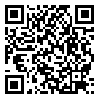BibTeX | RIS | EndNote | Medlars | ProCite | Reference Manager | RefWorks
Send citation to:
URL: http://jhr.ssu.ac.ir/article-1-337-en.html

 , Soheila Noori *2
, Soheila Noori *2 
 , AliAkbar Taj Firouze3
, AliAkbar Taj Firouze3 
 , Hossein Fallahzadeh1
, Hossein Fallahzadeh1 
 , Jamshid Ayatollahi4
, Jamshid Ayatollahi4 

2- Department of Biostatistics and Epidemiology, Health Faculty, Shahid Sadoughi University of Medical Sciences, Yazd, Iran. ,
3- Deputy for Health Affairs, Shahid Sadoughi University of Medical Sciences, Yazd, Iran
4- Infectious and Tropical Diseases Research Center, Shahid Sadoughi University of Medical Sciences, Yazd, Iran
Introduction: Iran is one of the major focus of cutaneous leishmaniasis (CL) in the world. Despite continued control efforts, the incidence of CL has increased in the many areas of Iran. the counties of Ardakan, Khatam, Bafgh, Abarkuh and Yazd are endemic places for cl in Yazd province that have occurred outbreak in them during March 2015 to March 2016.The aim of this paper was to identify the Epidemiological and clinical Aspects of Leishmaniasis in patients that were reported from these five endemic foci during outbreak .
Methods: This descriptive study was conducted on 150 cutaneous leishmaniasis patients that were referred to the provincial health center during outbreak from March 2015 to March 2016. Clinical and demographic information of patients were registered and analyzed by SPSS 23 software.
Result: From 150 cases 121 (80.2%) lived in urban areas. 93 (62%) of the patients were males. The most frequent age group was 21-30 years old (18.7%). housekeepers had the highest incidence (22.6%). (41.3%) of patients had Elementary education. Monthly family income in over half of the patients were less than a million tomans at months. The maximum number of CL cases were reported in autumn with 62(41.3%) Of the patients. 98 (65.3%) of the patients reported a history of travel in the past year. the highest rates of CL lesions were seen in feet (18.7%). In over half of the cases (52.7%), wound size was over than one centimeter and 82 (54.7%) of patients had only one wound.
Conclusion: In order to outbreak control, Basic measures such as Public education and education for people who travel to endemic areas and treatment of patients infected with urban type leishmaniasis as a reservoir, according to the geographical condition and carrier can be useful.
Received: 2016/10/31 | Accepted: 2017/03/18 | Published: 2017/06/5
| Rights and permissions | |
 |
This work is licensed under a Creative Commons Attribution 4.0 International License. |



